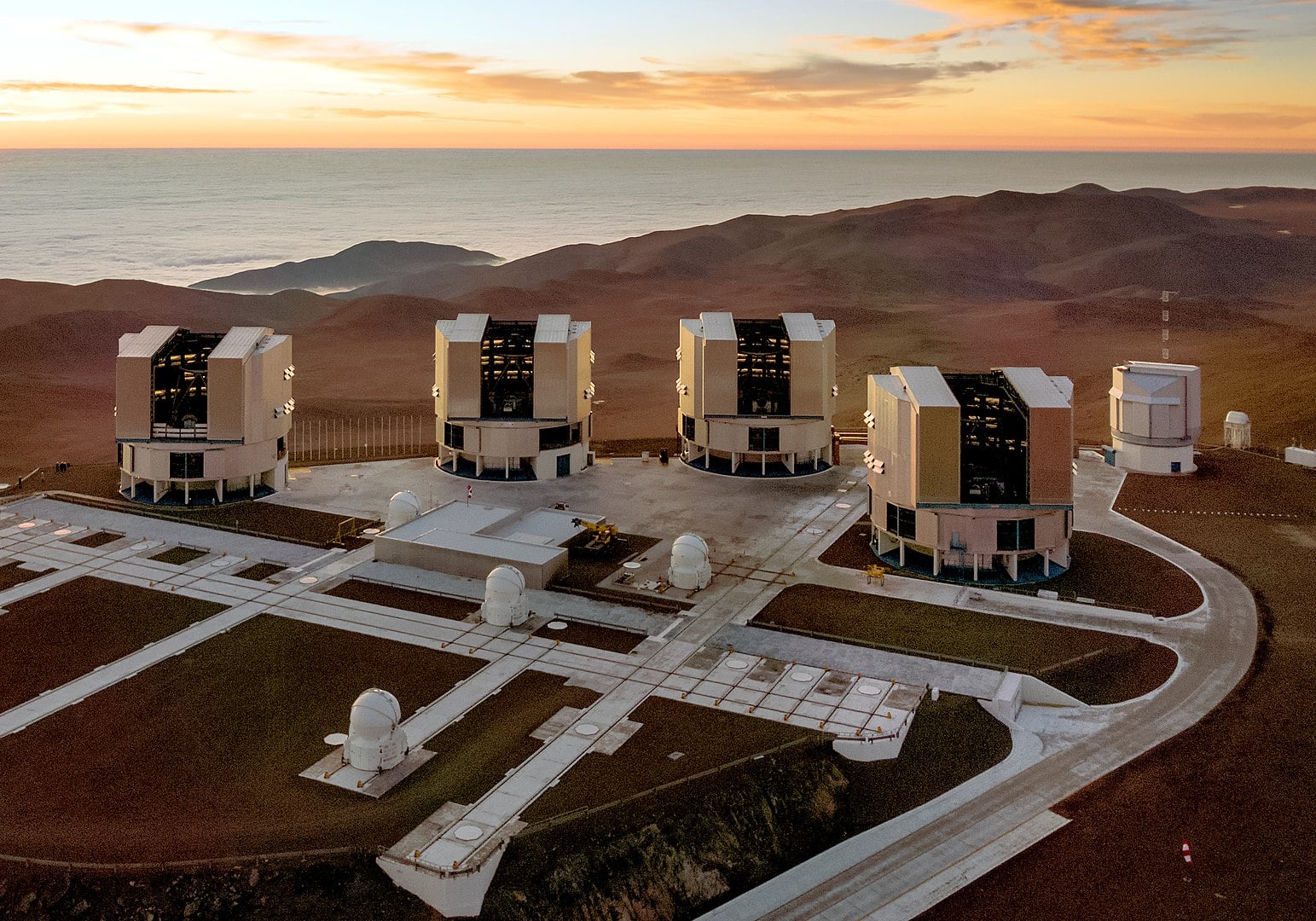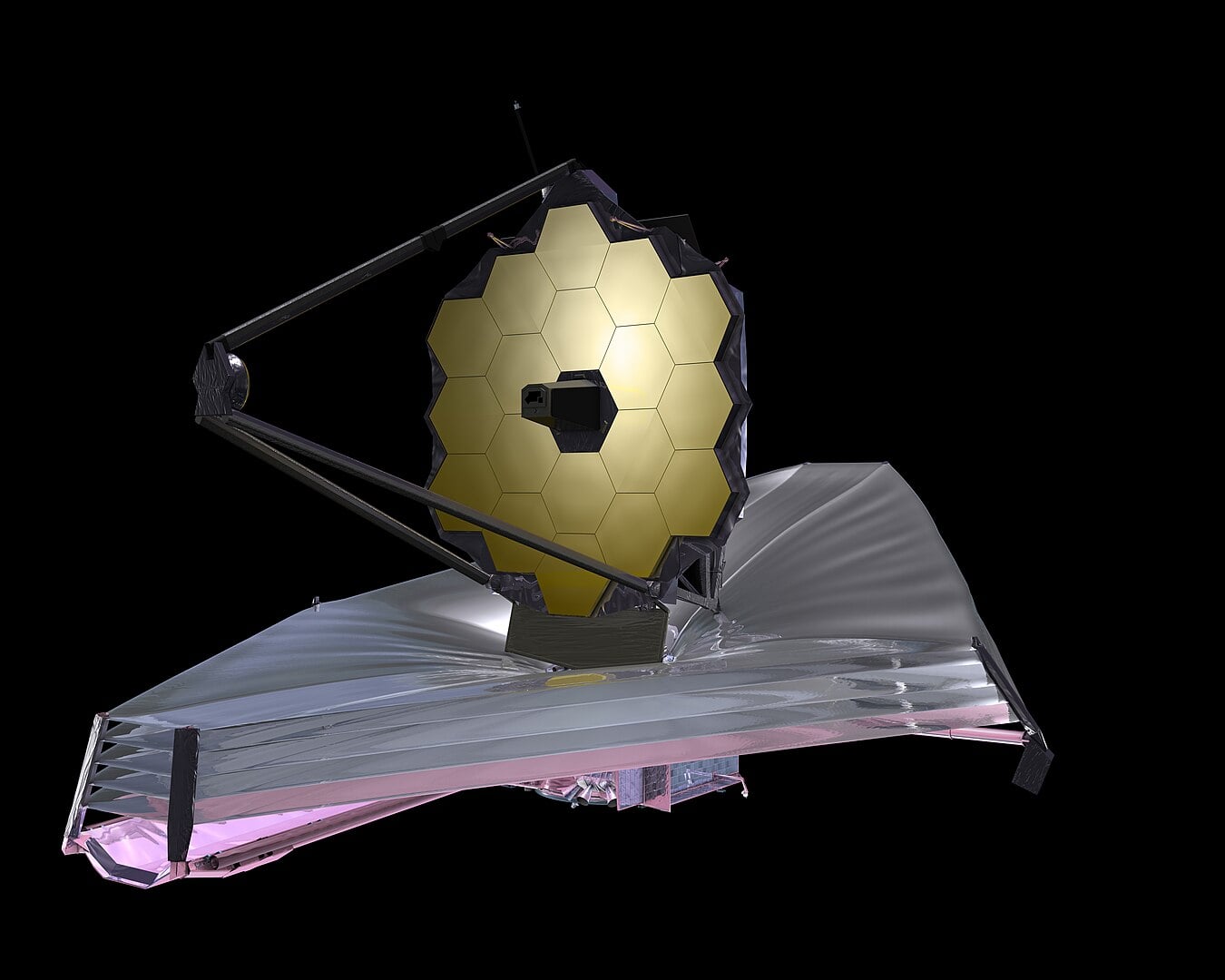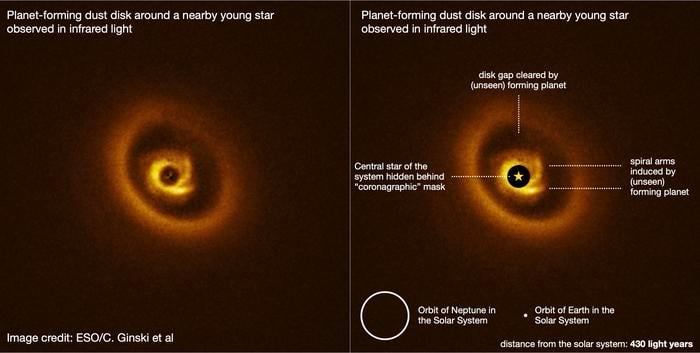A team of astronomers have captured spectacular images of what appears to be a gas giant planet in the process of formation, located 430 light years away from Earth. The discovery, led by researchers at the University of Galway, provides rare visual evidence of how planets are born within swirling disks of dust and gas around young stars.
Using the European Southern Observatory's Very Large Telescope in Chile, the international team led by Dr Christian Ginski from the University of Galway photographed the 2MASS1612 system, revealing an extraordinarily structured disk. The disk spans an enormous 130 astronomical units (an astronomical unit is the average distance between the Earth and Sun), meaning it's 130 times larger than the distance between Earth and our Sun. To put this in perspective, this disk would easily swallow our entire Solar System
 The Cerro Paranal mountain top is home to one of the world’s most advanced ground-based facility for astronomy, hosting the four 8.2-metre Unit Telescopes of the Very Large Telescope, four 1.8-metre Auxiliary Telescopes and the VLT Survey Telescope (Credit : ESO/G. Hüdepohl)
The Cerro Paranal mountain top is home to one of the world’s most advanced ground-based facility for astronomy, hosting the four 8.2-metre Unit Telescopes of the Very Large Telescope, four 1.8-metre Auxiliary Telescopes and the VLT Survey Telescope (Credit : ESO/G. Hüdepohl)
What makes this discovery particularly exciting is the disk's distinctive structure. Researchers observed a bright ring followed by a gap at roughly 50 astronomical units from the star. Within this gap, spiral arms twist inward like the eye of a hurricane. This observation matches theoretical predictions almost perfectly for how a forming planet should shape its surrounding disk.
The evidence suggests a gas giant planet is forming within this system, potentially several times more massive than Jupiter. The planet's gravitational influence creates the observed rings and spirals as it sweeps up material from the disk and carves out gaps in its orbital path. This process, called planet-disk interaction, is fundamental to understanding how all planets form, including those in our own Solar System billions of years ago.
"One rarely finds a system with both rings and spiral arms in a configuration that almost perfectly fits the predictions of how a forming planet is supposed to shape its parent disk according to theoretical models.” - Dr Christian Ginski.
This discovery showcases the collaborative nature of modern astronomy, with four University of Galway graduate students playing crucial roles in the analysis. Chloe Lawlor, Jake Byrne, Dan McLachlan, and Matthew Murphy all contributed to processing and interpreting the complex observational data.
It also represents a significant step forward in our understanding of planetary formation. While the team has observed nearly 100 possible planet forming disks around nearby stars, this particular system stands out for its textbook, perfect structure that aligns with theoretical models.
The team has already secured time on the James Webb Space Telescope for follow-up observations. Using Webb's unprecedented sensitivity, they hope to capture an actual image of the forming planet itself and confirm its presence definitively. If successful, this system will become a prime laboratory for studying how planets and their disks interact during the formation process.
 Artist illustration of the James Webb Space Telescope (Credit : NASA)
Artist illustration of the James Webb Space Telescope (Credit : NASA)
This discovery not only advances our scientific understanding but also offers a glimpse into what our own solar system might have looked like in its earliest days, when the planets we know today were just beginning to coalesce from a similar disk of dust and gas around our young Sun.
Source : Researchers discover likely site of new planet in formation
 Universe Today
Universe Today
